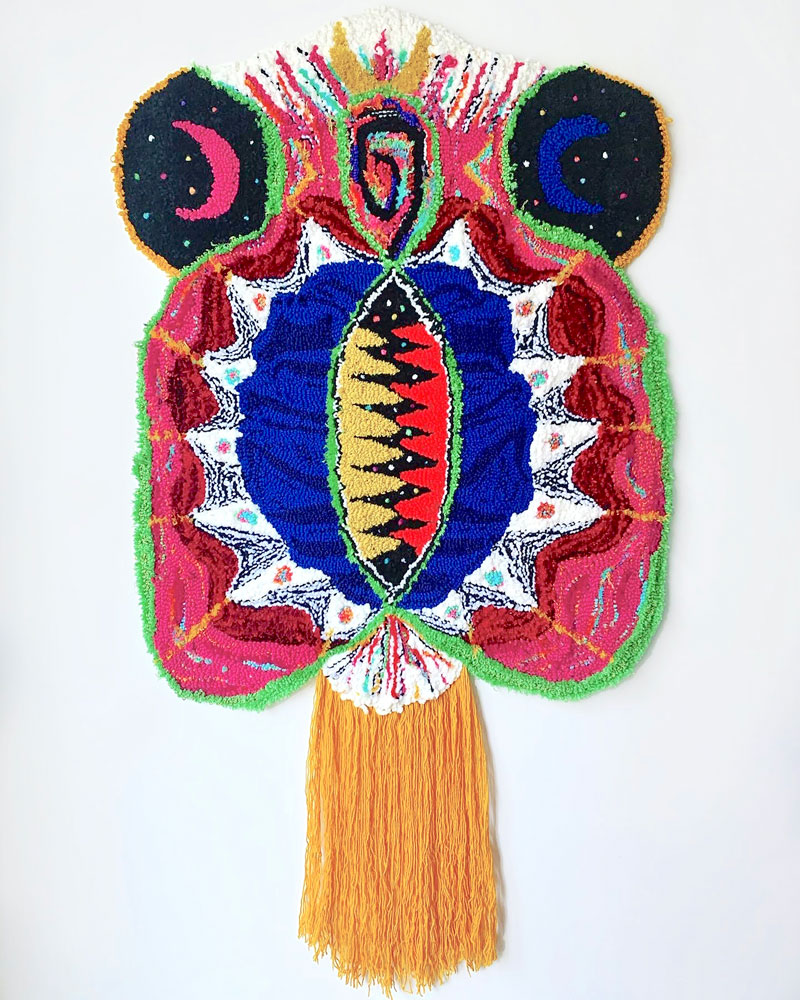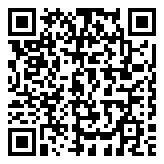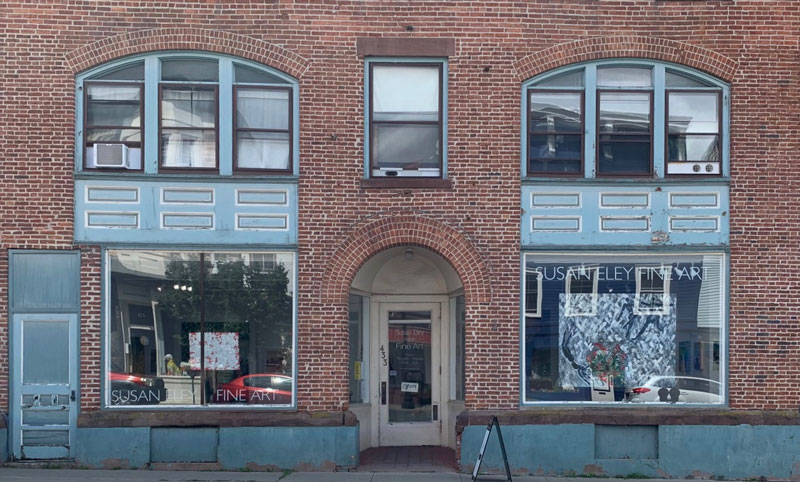
On View: Talking Threads
Susan Eley Fine Art’s Upstate location in Hudson, NY is pleased to welcome the guest curator Karlyn Benson to present a textile exhibition, also highlighting many local artists who specialize in these mediums. The artists include Eozen Agopian, Melissa Dadourian, Ana Maria Farina, Courtney Puckett, Padma Rajendran, Richard Saja and Hanna Washburn. The show is on view at SEFA Hudson from April 4 to May 12, 2024. SEFA will host an opening reception on Saturday, April 6 from 4 to 6PM with artists present. Talking Threads features seven artists who create narratives with textiles in a variety of ways.
Sewing, quilting, weaving and embroidery have long been used to communicate information, with almost every culture having some sort of textile tradition to tell the stories of their society. The artists in Talking Threads are part of a growing movement in contemporary art that utilizes fabric and fiber to experiment with unconventional processes, push traditional mediums in new directions and explore personal histories.
Eozen Agopian’s work incorporates drawing, painting, sewing and weaving. She started using thread in her work more than thirty years ago and is attracted to the ways it is used to put things together, the fluidity of the fibers and its ability to penetrate the canvas or to hang loose. Thread also symbolizes the needlework that Agopian made while growing up in Greece. The act of cutting and sewing patches of fabric reflects the artist’s need to put together pieces of three different worlds. Agopian explains: “Being an Armenian who was born in Greece and immigrated to America, I never had a profound sense of wholeness. I constantly strive to create a balanced and unified space.” Melissa Dadourian uses materials such as vintage threads, hand-dyed fabrics, burlap, canvas, paint and repurposed curtains as her tools for seeing the world. Textiles allow her to go beyond traditional mediums and push the boundaries of what a painting can be. Three of her works in Talking Threads refer to Nut, the Egyptian Goddess of the sky and heavens. Dadourian comments: “The power of belief and reverence is something I think about when making my work. The idea that an image can be seen as transformative is fascinating to me.” In Egyptian myths, the sun god Ra traveled through Nut; she swallowed him at night and then gave birth to him every morning. For Dadourian, thread and fabric evoke nuanced associations and connections, conjuring illusions of protection or creating ephemeral boundaries. Her work often contains contradictory elements, such as softness/firmness, looseness/tightness and masculine/feminine.
Ana Maria Farina creates her work with a tufting gun, needles, hooks and knots. Repurposing a phallic signifier of violence, her work inhabits a mystical pictorial space between abstraction and representation. Farina’s works on view in Talking Threads—entitled histérica #2 (hysterical #2) and histérica #4 (hysterical #4)—reference the outdated medical practice of diagnosing women with hysteria for a wide variety of symptoms including sexually forward behavior, anxiety, fainting and more. In recent decades, the feminist movement has adopted hysteria as a symbol of the systematic oppression of women while reclaiming the term for themselves. For Farina, her work represents hysteria as a manifestation of the unconscious mind ferociously unbound. Her smaller works in the exhibition are part of her “Naptime” series and were created while her infant daughter slept. Inspired by the beauty of the mid-Hudson Valley landscape, storm king and pôr do sol sobre o rio hudson (translated to Sunset Over the Hudson River) reference Farina’s memory of driving her daughter home on a beautiful afternoon around sunset.
Courtney Puckett’s work integrates the theories and methodologies of both fine art and craft by transforming domestic cast-offs, such as old furniture, household goods and textiles into abstract sculptures. Committed to environmentalism, she sources rather than buys materials, saving everyday detritus from the landfills and rehabilitating them into sculptural forms. Puckett uses textiles as a surface material because of the malleability and tactility of the materials. She simultaneously confronts the dominant, patriarchal hierarchies of art throughout history. Her sculptures on view in Talking Threads are inspired by her investigation of divination tools and practices, such as the tarot and the symbols she records in her sketchbooks. The four elements of air, earth, fire, water and the four compass points—north, south, east and west—are a framework for Puckett’s research into the inner self and inform her aesthetic decisions. Words that emerge from practices such as the tarot play an integral role in the conception of each piece and the construction of their form.
Padma Rajendran’s work features familiar shapes and symbols concealed behind delicate fibers, dyed silk, ribbons, textured marks of dyed found patterns, plastic mesh and acrylic felt. Her process is related to drawing and captures moments of ritual within the domestic space from the momentous event to the banal. The soft abstract works continue the artist’s experimentation with different combinations of material and clashing patterns and structures.
For Rajendran: “Home is a tended space, where the decorative beckons prosperity to flourish.”
Her work addresses how immigrant women create and sustain their stories to hold onto cultural elements of their homeland. She is interested in the aftereffect of migration on interior life, rituals associated within the home and food culture, language and its loss and the emergence of hopeful traditions in sustaining life and the spirit. She strives to honor these women’s stories by bringing them out of hiding.
Richard Saja focuses on creating interferences on the formal patterns of French toile de Jouy decorative fabrics through embroidery. His love and fascination for textiles derives from the unlimited interplay of pattern, color and texture offered by this medium. According to Saja: “Historically, toile de Jouy is a print that through its dense repetition becomes anonymous. It’s a tabula rasa begging for context not unlike a child’s coloring book. The act of selectively embellishing small areas of it automatically inverts its historical usage—suddenly the anonymity of the print is broken and it evolves through its subversion which appeals greatly to me.”
Through his embroidery, a whole new context is created, and a new story can be drawn out of the fabric. The two pieces included in Talking Threads are explorations into the deepest memories of Saja’s early childhood spent watching copious amounts of television, which has had a profound influence on his color sense and the shape-making of his needlework.
Hanna Washburn’s hand-sewn sculptures are constructed from clothing, furniture, household items and other utilitarian materials. She assembles each work organically by combining assorted colors, patterns and textures. Bright, visible stitching serves to highlight the artist’s mark making while presenting the body as a kind of patchwork. The resulting soft sculptures seem to gesture, emote and hold space with a playful and slightly unsettling presence. Recycled textiles and household objects spark moments of recognition for the viewer, as materials once used to cover and comfort take on their own autonomy. For example, in a work titled Mermaid, an ottoman sprouts a long patchwork fish tail. Washburn’s pieced-together sculptures recall a jumble of memories, feelings, and associations that blend, clash and overlap, eliciting multiple layers of interpretation. Textiles have a unique way of holding memories and experiences while also being useful.
Everyone has a personal association with fabric, whether it be a favorite t-shirt, a hand-made quilt, a childhood blanket or a scarf knitted by a family member. These items are often passed down from one generation to another and saved as family heirlooms. The artists in Talking Threads tell stories by combining familiar materials in unique ways. The work in the exhibition is made with a playful, experimental approach to create personal, fictional, universal or mythological narratives spelled out with thread and fabric.
Text by Karlyn Benson


